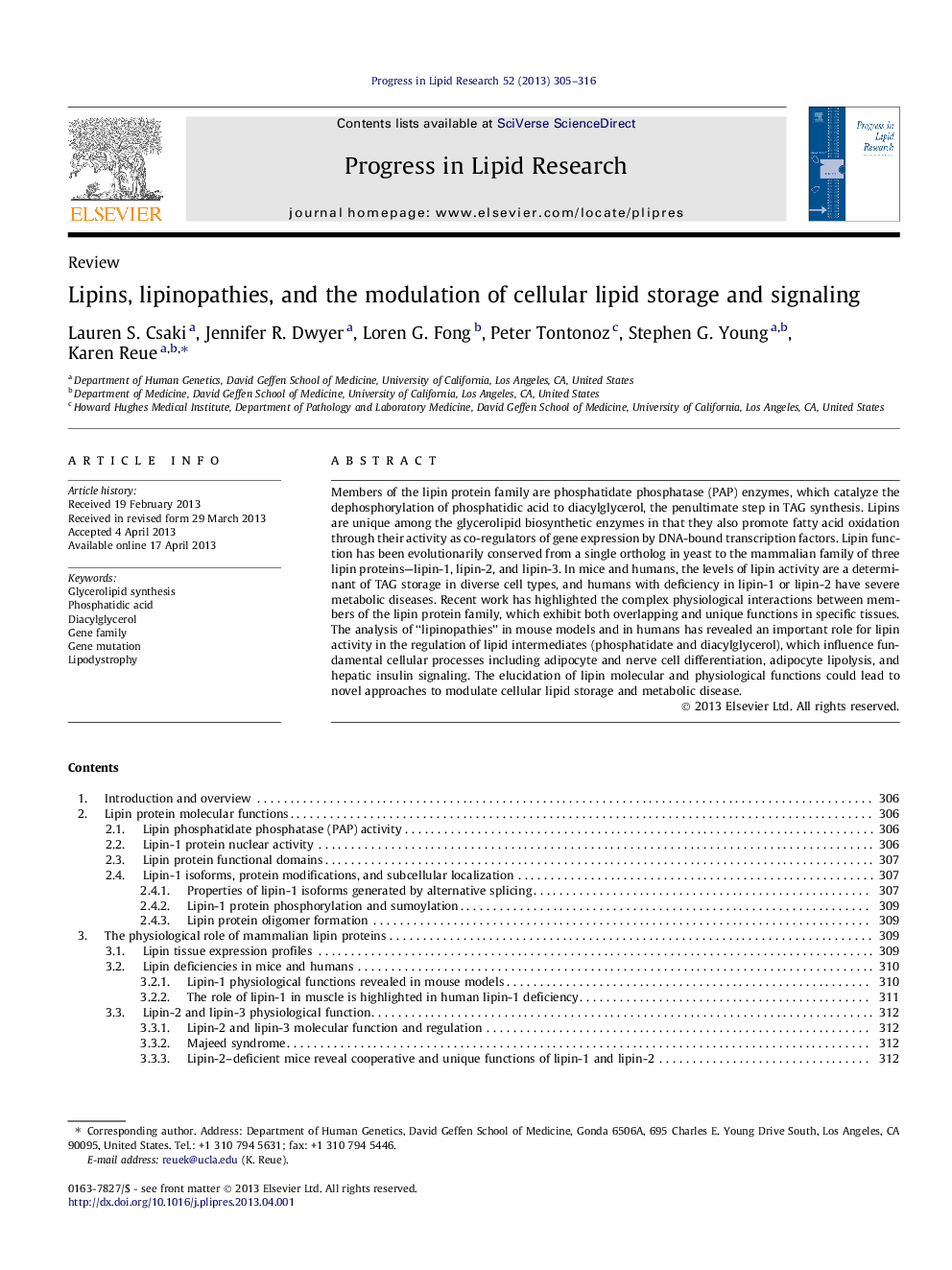| کد مقاله | کد نشریه | سال انتشار | مقاله انگلیسی | نسخه تمام متن |
|---|---|---|---|---|
| 10842922 | 1068557 | 2013 | 12 صفحه PDF | دانلود رایگان |
عنوان انگلیسی مقاله ISI
Lipins, lipinopathies, and the modulation of cellular lipid storage and signaling
ترجمه فارسی عنوان
لیپین ها، لیپینوپاتی ها و مدولاسیون ذخیره سازی چربی های سلولی و سیگنالینگ
دانلود مقاله + سفارش ترجمه
دانلود مقاله ISI انگلیسی
رایگان برای ایرانیان
کلمات کلیدی
سنتز گلیسریلیپید، فسفاتید اسید، دیسیل گلیسرول، خانواده ژنی، جهش ژنی، لیپودیستروفی،
موضوعات مرتبط
علوم زیستی و بیوفناوری
علوم کشاورزی و بیولوژیک
دانش تغذیه
چکیده انگلیسی
Members of the lipin protein family are phosphatidate phosphatase (PAP) enzymes, which catalyze the dephosphorylation of phosphatidic acid to diacylglycerol, the penultimate step in TAG synthesis. Lipins are unique among the glycerolipid biosynthetic enzymes in that they also promote fatty acid oxidation through their activity as co-regulators of gene expression by DNA-bound transcription factors. Lipin function has been evolutionarily conserved from a single ortholog in yeast to the mammalian family of three lipin proteins-lipin-1, lipin-2, and lipin-3. In mice and humans, the levels of lipin activity are a determinant of TAG storage in diverse cell types, and humans with deficiency in lipin-1 or lipin-2 have severe metabolic diseases. Recent work has highlighted the complex physiological interactions between members of the lipin protein family, which exhibit both overlapping and unique functions in specific tissues. The analysis of “lipinopathies” in mouse models and in humans has revealed an important role for lipin activity in the regulation of lipid intermediates (phosphatidate and diacylglycerol), which influence fundamental cellular processes including adipocyte and nerve cell differentiation, adipocyte lipolysis, and hepatic insulin signaling. The elucidation of lipin molecular and physiological functions could lead to novel approaches to modulate cellular lipid storage and metabolic disease.
ناشر
Database: Elsevier - ScienceDirect (ساینس دایرکت)
Journal: Progress in Lipid Research - Volume 52, Issue 3, July 2013, Pages 305-316
Journal: Progress in Lipid Research - Volume 52, Issue 3, July 2013, Pages 305-316
نویسندگان
Lauren S. Csaki, Jennifer R. Dwyer, Loren G. Fong, Peter Tontonoz, Stephen G. Young, Karen Reue,
